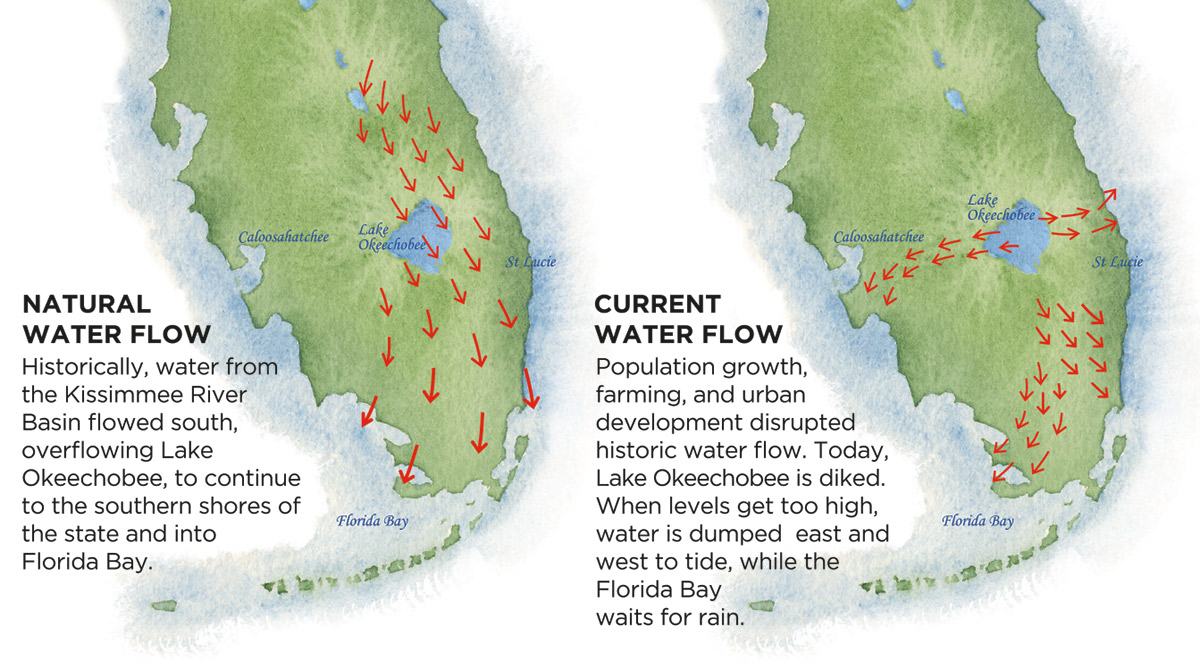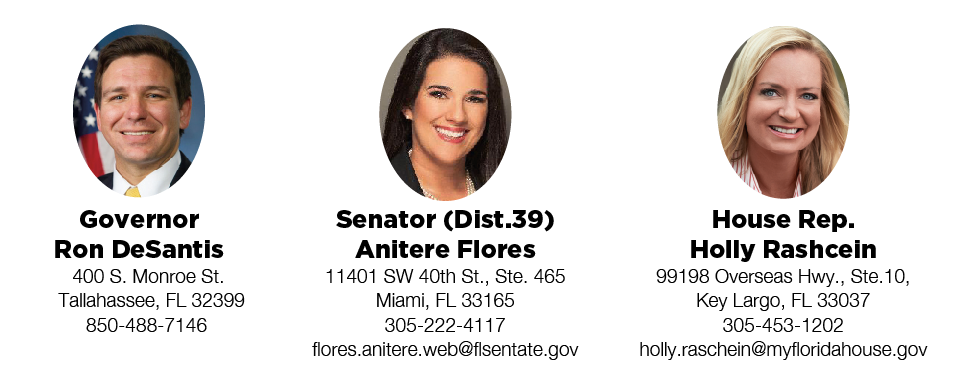Over one hundred years ago, as the first shovel of muck was removed from the River of Grass to turn Florida’s swamp into liquid gold, the state embarked on a transformational approach to water management.
A vision of astounding proportions was undertaken to attract Americans to relocate to Florida. With laser focus and intense ferocity, Florida’s wetlands were dredged, canals were created, and water flow was rerouted to make way for an early-50’s perception of the good life in the sunshine state: real estate boomed and agriculture was king.
For over a century, the best and brightest minds have worked under the supposition that water is best when it is managed in support of urban development, jobs, commerce, and agriculture. These factors have been driving the ship as our leaders have wrangled water to accommodate their own notion of progress.

Meanwhile, water quality, ecological diversity, conservation, and preservation have been an absolute afterthought.
Much of this progress-focused water management policy has been financially and politically driven by special interest groups who help define progress and thus easily gain the upper hand in manipulating water policy to suit their narrow agendas.
While the replumbing of Florida seems so distant from the Florida Keys paradise we have witnessed the changes in the pristine waters of the Florida Bay. Every rivulet of water, diverted from it’s intended southerly flow, is a drop that starves the Bay of dynamic fresh water influx.
The concept of Everglades Restoration was codified in 2000 and encompasses a web of projects to restore a natural water flow across the state. Preservation of the Florida Bay simply can not exist without completion of a much greater state-wide Restoration effort.
Monroe County is obliged to acknowledge that the water woes facing other Florida coastlines, are intrinsically our own. Everglades Restoration and South Florida water management must be executed with expediency, efficiency and accuracy if Florida Bay is to continue to thrive.
Who’s Who
The last thing anyone thinks about when poling the flats, spying a roseate, or soaking up the sun from the bow of the skiff is the fact that the Florida Bay is a managed resource. Policy – dictated by our elected leaders – can make or break the future of the Florida Bay and the future of the Florida Keys economy.
Let’s get to know who is making the rules.
FEDERAL
Play a key role in pitching the value of Everglades Resto ration nationally, and appropriating money in state/federal financial partnership to fund CERP projects.

GOVERNOR
Dictates when, where, and how Everglades Restoration is prioritized.
STATE
Key players in pushing an agenda of expediting CERP projects and legislation.

SPEAK UP
Follow these easy steps to make your voice heard when you call a policymaker:
1) State your name and where you live
2) Briefly state your concern and what you would like to see happen.
Example: “Thank you for continuing to focus on Everglades Restoration. My livlihood depends on the Florida Bay and expediting Everglades Restoration is the only way to preserve my backyard.”
3) If you are concerned about a certain bill, state the bill number and how you would like the policymaker to vote on it.
4) Thank the staffer.
WIN a 2-hour tour of Florida Bay!
Submit an original photo of your version of Florida Bay perfection to the FaceBook group Florida Bay Forever by July 26 to be eligible for this giveaway!

JOIN them at www.FloridaBayForever.org to learn how you can
HELP, DONATE, and ENGAGE.



























